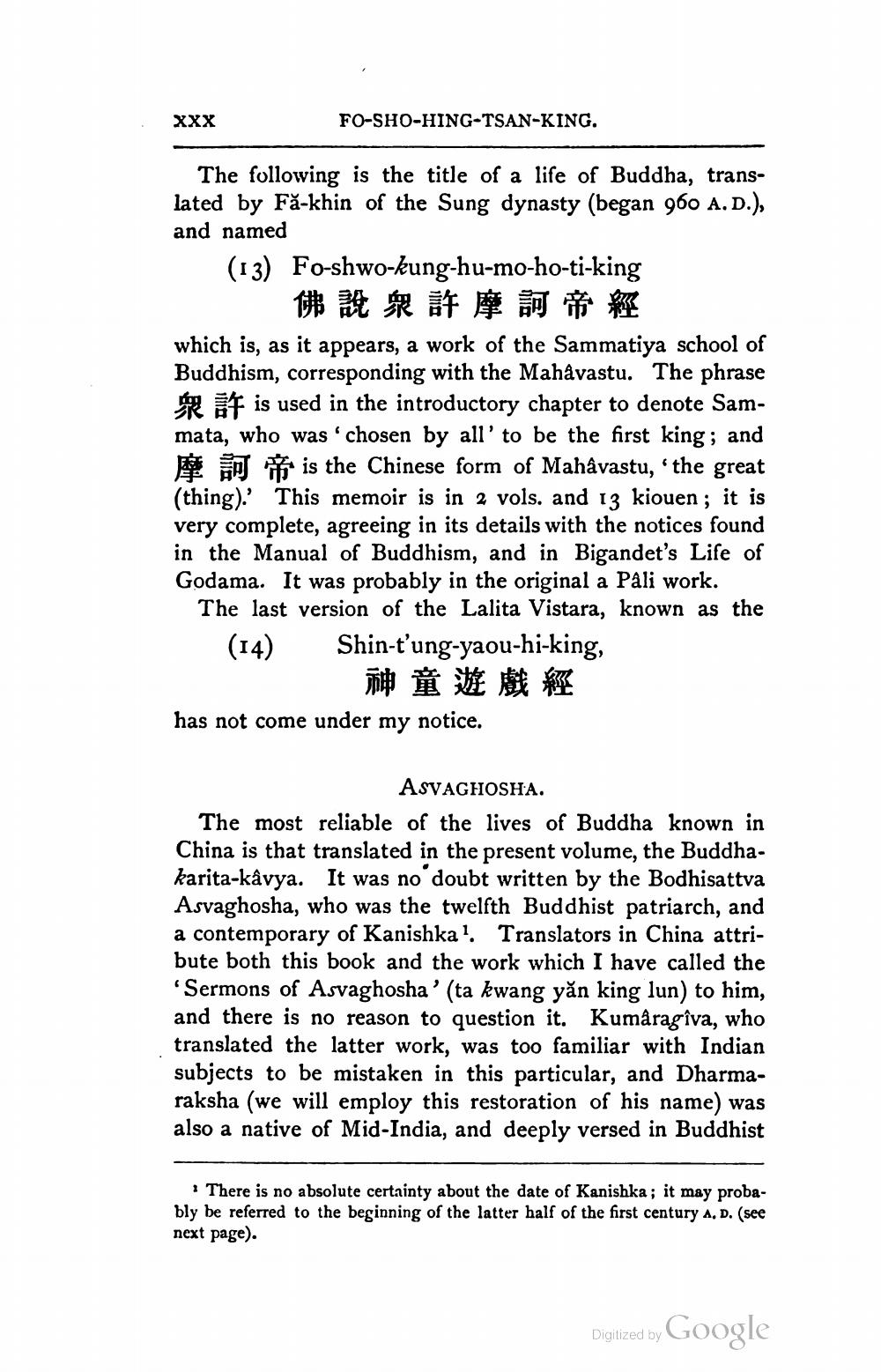________________
XXX
FO-SHO-HING-TSAN-KING.
The following is the title of a life of Buddha, translated by Fă-khin of the Sung dynasty (began 960 A. D.), and named (13) Fo-shwo-kung-hu-mo-ho-ti-king
佛說象許摩訶帝經 which is, as it appears, a work of the Sammatiya school of Buddhism, corresponding with the Mahävastu. The phrase
R is used in the introductory chapter to denote Sammata, who was chosen by all' to be the first king; and
en is the Chinese form of Mahâvastu, the great (thing).' This memoir is in 2 vols. and 13 kiouen ; it is very complete, agreeing in its details with the notices found in the Manual of Buddhism, and in Bigandet's Life of Godama. It was probably in the original a Páli work. The last version of the Lalita Vistara, known as the (14) Shin-t’ung-yaou-hi-king,
神童遊戲經 has not come under my notice.
ASVAGHOSHA. The most reliable of the lives of Buddha known in China is that translated in the present volume, the Buddhakarita-kâvya. It was no doubt written by the Bodhisattva Asvaghosha, who was the twelfth Buddhist patriarch, and a contemporary of Kanishka?. Translators in China attribute both this book and the work which I have called the
Sermons of Asvaghosha' (ta kwang yăn king lun) to him, and there is no reason to question it. Kumâragîva, who translated the latter work, was too familiar with Indian subjects to be mistaken in this particular, and Dharmaraksha (we will employ this restoration of his name) was also a native of Mid-India, and deeply versed in Buddhist
• There is no absolute certainty about the date of Kanishka; it may probably be referred to the beginning of the latter half of the first century A. D. (see next page).
Digitized by Google




